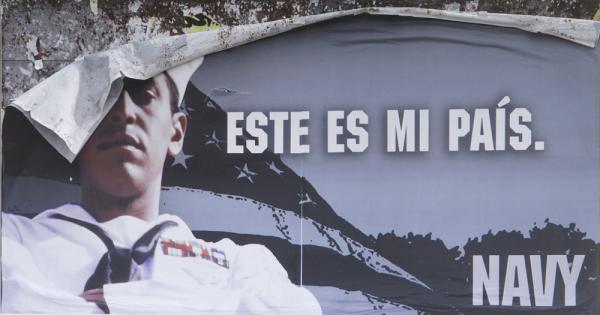"Transformation through reflection: The humanities in action" by Robert Colby

Este Es Mi País
Photograph by Camilo Ontiveros. Courtesy of the artist.

Este Es Mi País
Photograph by Camilo Ontiveros. Courtesy of the artist.
The humanities offer transformation through reflection on meaningful works of literature, art, history and many other forms of cultural production. In this piece, Ohio Humanities program officer, Rob Colby, reflects on the impact humanities practices can have for civic engagement.
Documentation, imagination, interpretation, reflection. These humanities activities have inherent value but how do we describe their larger public benefit? Anecdotally, we know we're different after reading a great work of literary fiction or having a powerful encounter with a work of art. We understand ourselves differently after documenting our family genealogy and reflecting on how ancestral roots shape our lives. All those who have completed a book manuscript or dissertation understand how the deep work of sustained critical thought and imaginative invention alter our perceptions of our world as we create threads of inquiry that draw us forward to new insights and to ask new questions.
These transformational humanities practices are necessarily individual activities. But the recent rise of the book club shows how we wish to create meaning in our lives in the company of others. Over the last few years I've refined a method of image-based facilitation that may continue to help bring these humanities activities into the public sphere. After I completed a PhD in art history and began working in the academic museum field, I created an object-based teaching method to help students think critically. Based on this, I began collaborating with a university colleague on a social work intervention research project called Yo Veo. Yo Veo used image-based facilitation to support teachers adjusting to classrooms with increasing Latino immigrant populations and served as an alternative to traditional diversity training. This initiative led to an NIH-funded project called Envisioning Health that used image-based facilitation and photo-documentation to help build stronger bonds between doctors and their Latino immigrant patients.
Image-based facilitation relies on carefully chosen visual material strategically paired with relevant information, from the simple to the complex, from accompanying captions to scholarly articles. With the addition of participants' observations and conclusions the facilitated conversation becomes a discursive space where the real work of cultural processing occurs. Participants find it meaningful and enjoyable—as one person noted, "It's like a massage for the brain." But it can also reveal some of the challenges that underlie our current age of negativity and negation. Sometimes, participant perspectives are so different it becomes clear how divergently we see the world. And yet, there is cause for cautious optimism. Beginning to see the world through others’ eyes is the start of a whole host of social benefits.
This hit home for me in September, 2014 when I helped lead a training session for sixty-four AmeriCorps program managers as part of Ohio Humanities and ServeOhio’s annual Justice Talking program. I chose Camilo Ontiveros' Este Es Mi País, a work of conceptual photography that appropriates a US Navy advertisement designed to target recent Latino immigrants.
Some participants spoke movingly about relatives who had joined the military and had their lives reshaped for the better, acquiring discipline, building strong relationships and gaining access to higher education. Others reflected on how the realities of war and its aftermath appear worlds away from the rhetorical language of military recruitment advertising. Some pointed to the careful choice of powerful symbols in the original advertisement and spoke about how such images may be alluring to young people looking for a sense of belonging. Others noted the billboard’s shabby, peeling corner and suggested that the artist intended to reveal a discrepancy between representation and reality. What I remember most was the range of emotion. Some spoke with a tremulous voice that revealed strong feelings for the issues at stake. Others were more dispassionate. A culminating moment for me came when one of the participants noted just how divergent peoples’ interpretations of the image were. The comment was apt but showed just how much remains to be done in encouraging us to see other points of view. But it also revealed the vital role humanities activities—documentation, imagination, interpretation, and reflection—can play in creating a place for the important work of building a shared future.